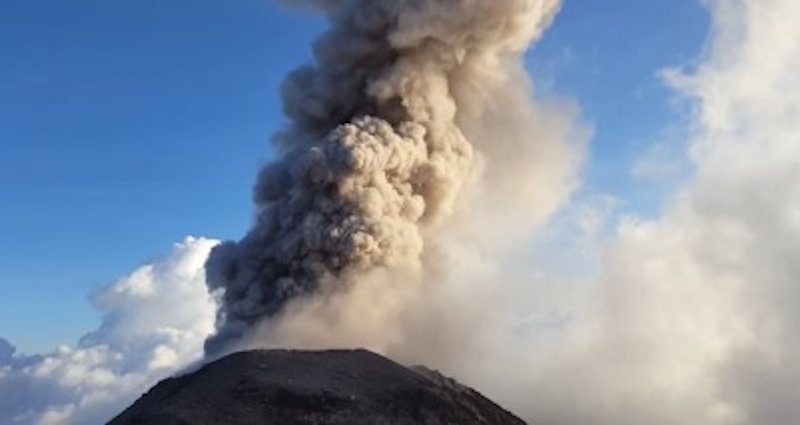
© Screenshot via YouTube/juanp756
Santiaguito, an active dome of the Santa Maria volcano in Guatemala produced a large explosion on the morning (local time) of December 1, 2015, following a period of heightened activity. An active volcano watch and the necessary precautions for air traffic in the area have been recommended.
A period of increased activity of Santiaguito volcano since November 29 resulted in a strong explosion in the early hours of December 1. The explosion produced a plume of ash between 2 and 3 km (6 562 and 9 843 feet) high most likely accompanied by a small pyroclastic flow, Volcano Discovery reported.
A powerful explosion occurred at 07:07 am (local time) and a pyroclastic flow traveled about 15 km (9.3 miles) west-southwest. The ashes have been reported to fall near the St. Marcos Palajunoj, Finca La Florida and other adjacent villages, according to
INSIVUMEH.
Several explosions have been reported over the last few days from the Caliente lava dome, significantly stronger than average. A moderately strong explosion was observed on November 30 at 01:34, which ejected incandescent bombs up to 150 m (492 feet) above the volcano dome. A large incandescent avalanche has also been observed on the eastern side of the Caliente dome.
On October 30 heavy rainfall in the area triggered cold lahars which descended Santa María's Cabello de Ángel (a tributary of Nima I) and San Isidro (tributary of El Tambor) drainages, INSIVUMEH reported. The lahar in San Isidro carried blocks that were between 1 and 2 m (3.3 and 6.6 feet) in diameter. In the period between October 30 and 31 explosions generated ash plumes that rose 800 m (2 625 feet) above the crater and drifted SW, causing ashfall in southern Monte Claro. Ash plumes from explosions rose as high as 1.1 km (3 609 feet) and drifted SE during November 2 and 3. The ash fell in the southwestern flank of Finca El Faro, 5 km (16 404 feet) to the south of La Florida, 10 km (32 808 feet) to the southwest of San Marcos and 18 km (59 055 feet) to the south-southwest of Palajunoj.
INSIVUMEH has recommended an active volcano watch of the activities of volcanoes Pacaya, Fuego and Santiaguito and taking the necessary precautions with air traffic in the region, as the ash from eruptions is present in the atmosphere.
Geological summarySymmetrical, forest-covered Santa María volcano is one of the most prominent of a chain of large stratovolcanoes that rises dramatically above the Pacific coastal plain of Guatemala. The 3772-m-high stratovolcano has a sharp-topped, conical profile that is cut on the SW flank by a large, 1.5-km-wide crater. The oval-shaped crater extends from just below the summit to the lower flank and was formed during a catastrophic eruption in 1902.
The renowned plinian eruption of 1902 that devastated much of SW Guatemala followed a long repose period after construction of the large basaltic-andesite stratovolcano. The massive dacitic Santiaguito lava-dome complex has been growing at the base of the 1902 crater since 1922. Compound dome growth at Santiaguito has occurred episodically from four westward-younging vents, the most recent of which is Caliente. Dome growth has been accompanied by almost continuous minor explosions, with periodic lava extrusion, larger explosions, pyroclastic flows, and lahars. (GVP)

Reader Comments
to our Newsletter